Beni Hime Dwarf Japanese Maple
$69.50 Original price was: $69.50.$48.65Current price is: $48.65.
- Free Shipping over $25
- Fast & reliable delivery options
- Enjoy top quality items for less
- Multiple safe payment methods

Sometimes the name says it all, and with the Red Dwarf Japanese Maple it certainly does. Like the whole tree, even the foliage is dwarf, and the leaves are red in spring and summer, turning rich red and purple in fall. Although dwarf, growing to no more than 2 or perhaps 3 feet tall after 10 years, this plant is also fast-growing when young – unlike so many other dwarf plants – so you won’t wait long at all for it to become a striking specimen plant.
Growing Red Dwarf Japanese Maple Trees
The Red Dwarf Japanese Maple is a perfect miniature tree, reaching just 2 feet tall and wide in a container, and no more than 3 feet tall and wide when grown in the ground. The slender twigs form a dense, bushy plant, which can be kept more open by pruning, if desired. The great thing about this plant, compared to other dwarf Japanese maples, is the leaf size. These are a miniature as the plant, sitting close to the stems, and measuring no more than one inch long, and often less. This makes the whole plant a perfect scale model of a larger tree, and therefore ideal as a tiny specimen. The leaves have five long, tapering lobes radiating out from the leaf-stem like fingers on a hand. They are an ever-changing spectacle of color. In spring they are bright red, turning green for the summer, but with a red flush towards the end of the lobes remaining. But the new growth keeps emerging bright red, so that for most of the summer the tree is many tones of color, from red to pink and into green, making a lovely effect that is always different whenever you visit your tree. Then in fall, the leaves turn brilliant shades of raspberry red and rich royal purple – a spectacular end to the season.
With its natural dwarf size, the Red Dwarf Japanese Maple is a perfect choice for growing in a beautiful pot, for display on the ground or on a table. You can move it around to get the ideal light levels, and you can always keep the watering just right. Unlike working with larger trees to make bonsai, no root trimming, or removal of the first leaf crop to stimulate a new crop of smaller leaves, is necessary. You can create a plant that looks like many years of skilled effort has gone into it, but all you did was plant it in an attractive pot – it’s that easy. This tree is also perfect for a specimen in a small garden, or a small area. Of course, it is ideal for Asian-style gardens, but it looks just as lovely in a woodland setting, or in a bed in any garden at all.
The Red Dwarf Japanese Maple grows best in full sun, if there is sufficient water available, or with some afternoon shade. It tolerates more sun than many Japanese maples, without scorching, and good light with create the best and strongest colors too. This tree is a little less cold-resistant than most other Japanese maples, and it will only grow in warmer parts of zone 6, without winter protection. Of course, in colder zones you can bring it into a cool place for the winter. High light is not necessary during winter, since it is dormant, but it cannot be warm – a place very close to freezing, or a little below it, would be ideal. Keep the soil drier than normal when the tree is dormant, but not completely dry. Place your tree back outside once the weather is milder, and before it begins to leaf out again. Japanese maple cannot be grown as a houseplant, because low winter temperatures are necessary to maintain its natural growth cycles. The soil in containers should be well-drained to keep the roots healthy. Adding 20% coarse sand or fine gravel to ordinary potting soil will give you that. You may also be able to find blended potting soil for trees at your local garden center. Make sure your container has drainage holes. Outdoors, plant the Red Dwarf Japanese Maple in rich, moist, well-drained soil. It is not drought-resistant, so water it regularly. It is normally free of pests or diseases, and pruning is optional, and should be aimed at developing the form you want to see.
History and Origins of Red Dwarf Japanese Maples
The Red Dwarf Japanese Maple is a selected form of the Japanese maple, Acer palmatum. This tree grows in the forests of Japan, Korea and parts of China, and it is a rounded tree growing 25 feet tall, or more. Japanese gardeners have found unusual forms of this tree for centuries and collected them. One of the very smallest and most compact is called ‘Beni Hime’, which translates from Japanese as ‘Red Dwarf’, and although we don’t know the exact origin of this tree, it was presumably once introduced from Japan to America. This rare plant is difficult to reproduce, but easy to grow, so it is always rare, and always desirable. The avid fans of Japanese maples who come to us will very soon buy up our entire stock of this beauty, so order now.
Be the first to review “Beni Hime Dwarf Japanese Maple” Cancel reply
Related products
Birch Trees
Japanese Maple Trees
Japanese Maple Trees
Maple Trees
Shade Trees
Maple Trees
Maple Trees
Japanese Maple Trees


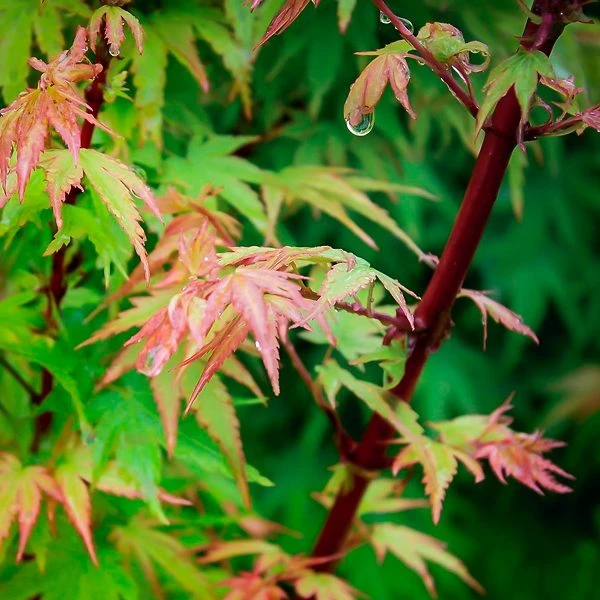

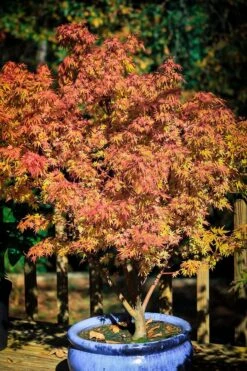
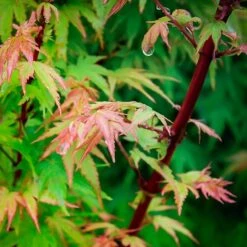
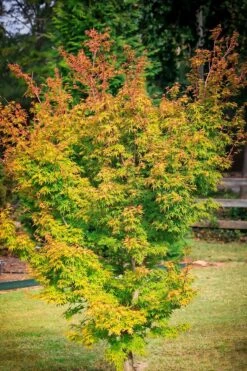

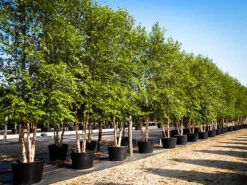
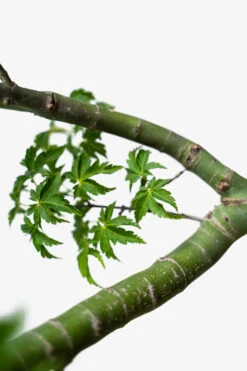
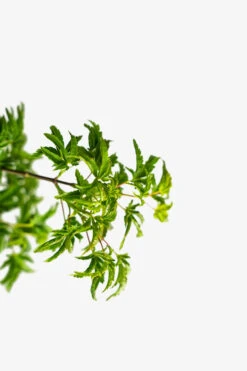


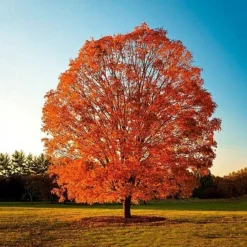
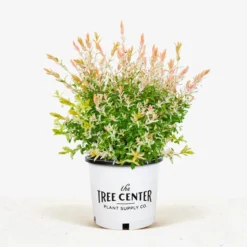

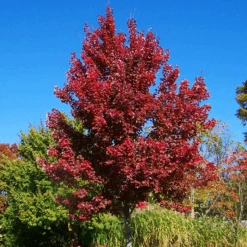
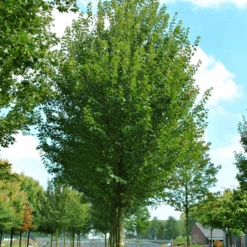
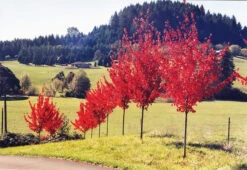



Reviews
There are no reviews yet.